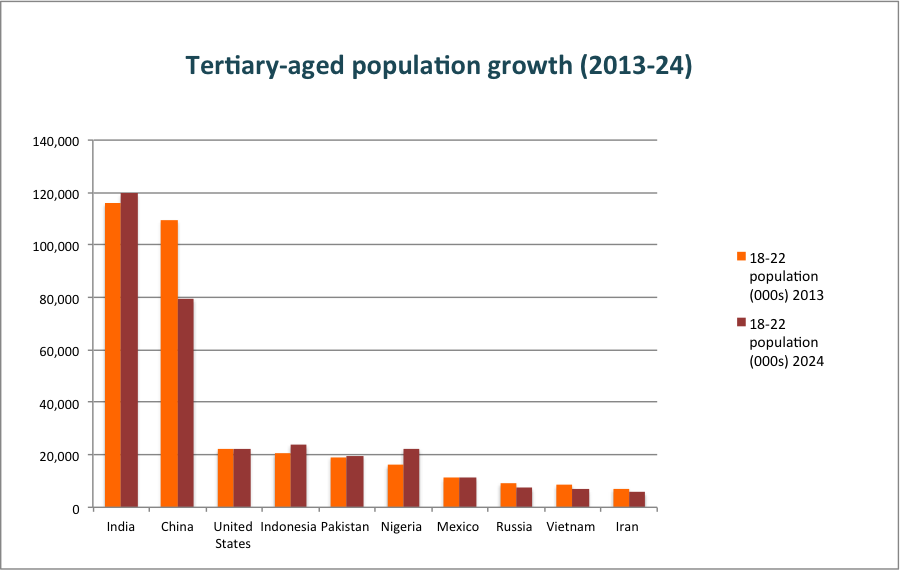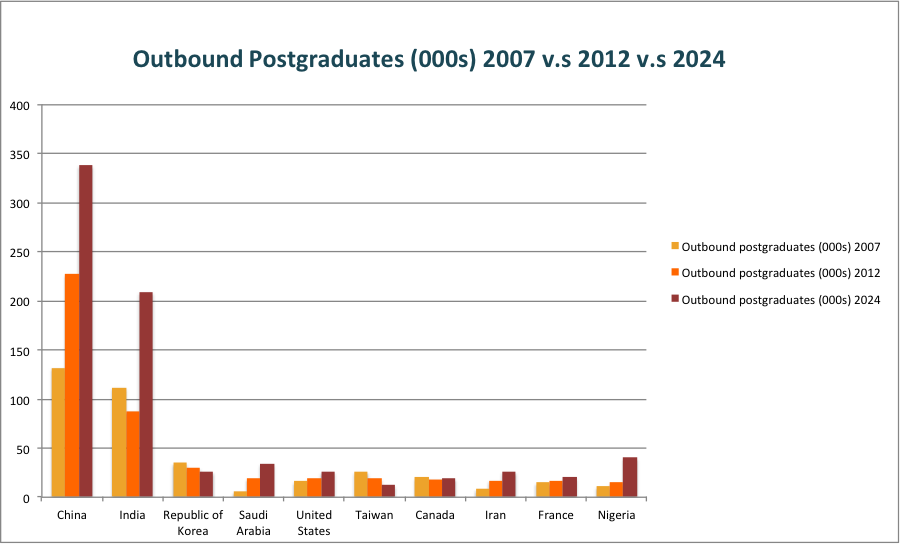“It's tough to make predictions, especially about the future.” as Yogi Berra is famously quoted as saying.
In general, it seems much more fun to make long-term predictions, since nobody will check back whether we are right or wrong. And yet, with this blog coinciding with Election Day, there are plenty of pundits making all kinds of near term predicitions as we write this blog. At least half of them are going to be wrong. Will any of us go back and take them to task?
So why all this talk about predictions? The British Council published their 2024 forecast for postgraduate mobility trends. ICEF was kind enough to post the full report.
- Continued strong growth in post-graduate mobility
- The U.S. is projected to grow 4% per year and host 407,000 graduate students (Good news since the graduate school deans were worried about their enrollment figures.)
- India will be a driving force and Chinese graduate students are expected to increase despite a decline of 30 million students in China
- Useful summary of demographic trends for higher education
- The status quo is projected forward without any impact from technological, policy or attitudinal changes
The authors state clearly that they rely on trends, "for which there is data available, and do not take into account other variables that may affect international student mobility in the future."
We'll be honest with you, we are really struggling with this last line. Making predictions about the future without considering other variables for which you have no data? Hmmmm.
Forecasting the future is hard, and sometimes risky, work that is always important for policy and institutional planning. Demographics are a powerful force for most businesses and certainly for education. The 10-year time frame is relatively short if you consider that all the projected graduate students are already in school today. So what could go wrong just relying on the data at hand?
Just to avoid any doubt, and our regular readers already know this, we are strong believers in future increased student mobility. And as we consider the future, we believe in setting the stage with broad based scenario building as a legitimate introduction for such a report. There are trends we all see - whether we have the data easily at hand or not.
We read the figures of the number of students as largely "artificial" precision for the 10-year horizon without lots of caveats about visa policies and, in particular, technology trends. We have analyzed the trends for online education in the past. We recently published a podcast with Lisa Barrett, the Global Partner Manager from Coursera. As you know, we are steeped in this stuff and we regularly speak to the leaders in the field to learn more. And we share our insights with you through this blog and by speaking at industry conferences. We are no stranger to making predictions based on trends-- combining hard data with softer macro-observations.
So here are a just a couple of things about the British Council report that we noticed:
- Interestingly, Japan was not included in the report. In the year 2000, open doors reported 46,000 Japanese students studying in the US, last year 20,000 ---> demographics played a role, but much more importantly, attitudes and economic interests seem to have changed. Returning grads may not have been able to find jobs in Japan.
- Another example, we had 10,000 students from Germany studying in the U.S. in 2000 and an equal number last year. Nobody predicted the impact of the Bologna Process, which allows European students to cross borders much more easily in Europe and receive credit for their academic work.
Table 1 (below) from the report shows the undisputable demographic trends and Table 2 (below) shows the tertiary enrollment trends. This is valuable information.
To be fair to our colleagues from the British Council, we like the long term thinking that allows graduate schools to identify markets with attractive demographic trends. Yet we all know that there is much more at play when seeking to attract international students. Visa policies and broad employment trends are important macro-factors. Economic conditions as a whole and how a region's economic policies might favor a stronger middle class are important. Natural disasters, and their impact on economic conditions, can change things too (again, consider Japan).
What to do?
While many factors are beyond your control, as the deans, administrators and faculty of graduate schools, you want to focus on elements that you can control and influence: the quality of your marketing and outreach, the student experience, the mix of academic programs offered, and the post-graduation support from career services to alumni relations. And as geographic trends in student mobility indicate, you'll want to develop culturally relevant marketing content to explain how your institution's strengths differentiate your institution from the 4,000+ other higher education options the U.S. has to offer.
If you do it right, maybe your institution will be blessed with one of our other favorite Yogi Berra-isms: "Nobody goes there anymore; it's too crowded."



